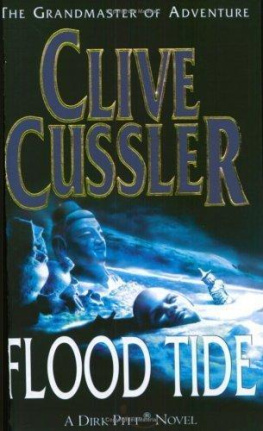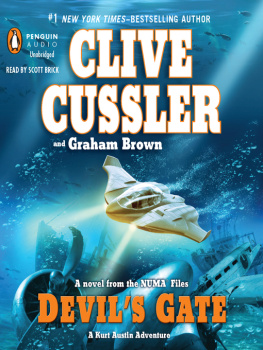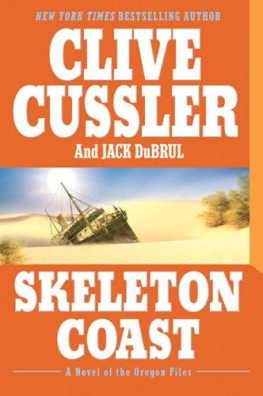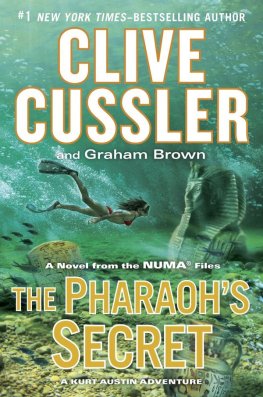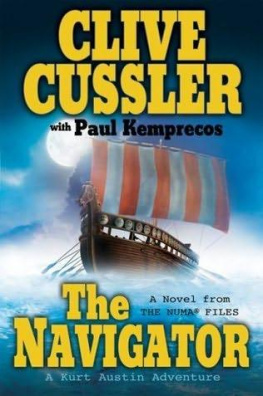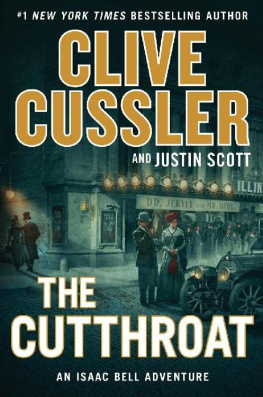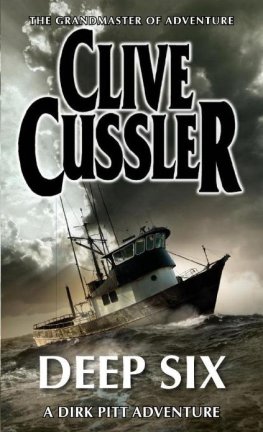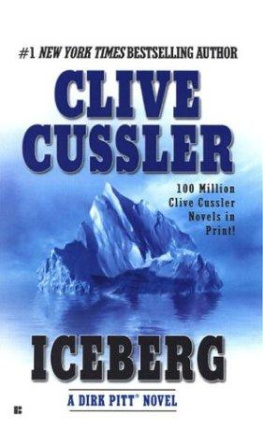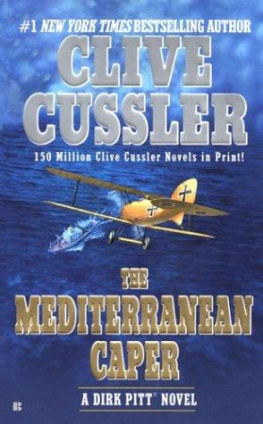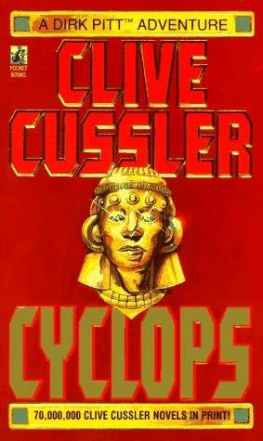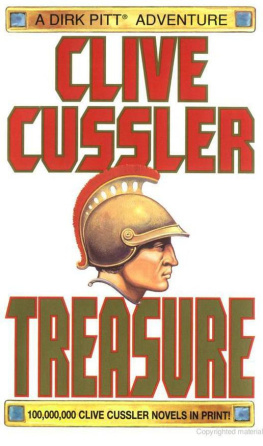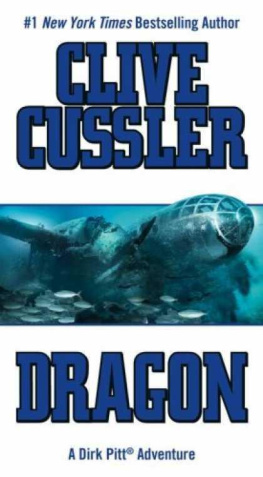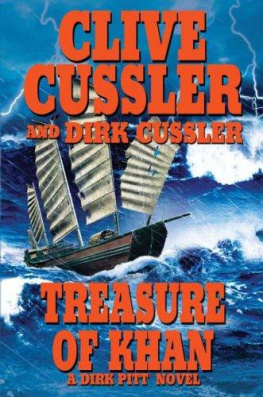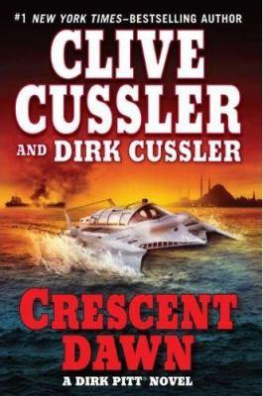Clive Cussler - Dirk Pitt 14 Flood Tide
Here you can read online Clive Cussler - Dirk Pitt 14 Flood Tide full text of the book (entire story) in english for free. Download pdf and epub, get meaning, cover and reviews about this ebook. year: 2009, publisher: Simon & Schuster, genre: Art. Description of the work, (preface) as well as reviews are available. Best literature library LitArk.com created for fans of good reading and offers a wide selection of genres:
Romance novel
Science fiction
Adventure
Detective
Science
History
Home and family
Prose
Art
Politics
Computer
Non-fiction
Religion
Business
Children
Humor
Choose a favorite category and find really read worthwhile books. Enjoy immersion in the world of imagination, feel the emotions of the characters or learn something new for yourself, make an fascinating discovery.
- Book:Dirk Pitt 14 Flood Tide
- Author:
- Publisher:Simon & Schuster
- Genre:
- Year:2009
- Rating:5 / 5
- Favourites:Add to favourites
- Your mark:
- 100
- 1
- 2
- 3
- 4
- 5
Dirk Pitt 14 Flood Tide: summary, description and annotation
We offer to read an annotation, description, summary or preface (depends on what the author of the book "Dirk Pitt 14 Flood Tide" wrote himself). If you haven't found the necessary information about the book — write in the comments, we will try to find it.
Dirk Pitt 14 Flood Tide — read online for free the complete book (whole text) full work
Below is the text of the book, divided by pages. System saving the place of the last page read, allows you to conveniently read the book "Dirk Pitt 14 Flood Tide" online for free, without having to search again every time where you left off. Put a bookmark, and you can go to the page where you finished reading at any time.
Font size:
Interval:
Bookmark:
Flood Tide
by Clive Cussler
Series: Dirk Pitt, Book 14
Publisher: Pocket Star (December 29, 2009)
ISBN-10: 1439148112
ISBN-13: 978-1439148112
THE WAVES TURNED VICIOUS AND WORSENED WITH EVERY rush of wind. The calm weather of the morning transformed from Dr. Jekyll into a vehement Mr. Hyde by late evening. Whitecaps on the crests of towering waves were lashed into sheets of spray. The violent water and black clouds merged under the onslaught of a driving snowstorm. It was impossible to tell where water ended and sky began. As the passenger liner Princess Dou Wan fought through waves that rose like mountains before spilling over the ship, the men on board were unaware of the imminent disaster that was only minutes away. The crazed waters were driven by northeast and northwest gales that simultaneously caused ferocious currents to smash against the ship from two sides. Winds soon reached a hundred miles an hour with waves that crested at thirty feet or more. Caught in the maelstrom, the Princess Dou Wan had no place to hide. Her bow pitched and drove under waves that swept over her open decks and flowed aft and then forward when her stern rose, throwing her wildly spinning propellers free of the water. Struck from all directions, she rolled thirty degrees, her starboard rail along the promenade deck disappearing in a torrent of water. Slowly, too slowly, she sluggishly righted herself and plunged on, steaming through the worst storm in recent history.
Freezing and unable to see through the blinding snowstorm, Second Mate Li Po, who stood watch, ducked back inside the wheelhouse and slammed the door. In all his days of sailing the China Sea, he had never seen swirling snow in the middle of a violent storm. Po did not think the gods were fair to hurl such devastating winds at the Princess after a voyage halfway around the world with less than two hundred miles to go before reaching port. In the past sixteen hours, she had only made forty miles.
Except for Captain Leigh Hunt and his chief engineer down below in the engine room, the entire crew were Nationalist Chinese. An old salt with twelve years in the Royal Navy and eighteen as an officer for three different shipping-company fleets, Hunt had served fifteen of those years as captain. As a boy he went fishing with his father out of Bridlington, a small city on the east coast of England, before shipping out as an ordinary seaman on a freighter to South Africa. A thin man with graying hair and sad, vacant eyes, he was deeply pessimistic about his ship's ability to weather the storm.
Two days earlier, one of the crewmen had called his attention to a crack in the starboard outer hull aft of the single smoke-stack. He would have given a month's pay to inspect the crack now that his ship was enduring incredible stress. He reluctantly brushed the thought aside. It would have been suicide to attempt an inspection under hundred-mile-an-hour winds and the raging water that spilled across the decks. He felt in his bones the Princess was in mortal danger, and accepted the fact that her fate was out of his hands.
Hunt stared into the blanket of snow that pelted the wheel-house windows and spoke to his second mate without turning. "How bad is the ice, Mr. Po?
Building rapidly, Captain. Do you believe we're in danger of capsizing? Li Po shook his head slowly. Not yet, sir, but by morning the load on the superstructure and decks could prove critical if we take on a heavy list."
Hunt thought for a moment, then spoke to the helmsman. Slay on course, Mr. Tsung. Keep our bow into the wind and waves.
Aye, sir, the Chinese helmsman replied, feet braced wide apart, hands tightly gripping the brass wheel.
Hunt's thoughts returned to the crack in the hull. He couldn't remember when the Princess Dou Wan had a proper marine inspection in dry dock. Strangely, the crew's uneasiness about leaks, badly rusted hull plates, and weakened and missing rivets was totally lacking. They appeared to ignore the corrosion and the constantly running bilge pumps that strained to carry off the heavy leakage during the voyage. If the Princess had an Achilles' heel, it was her tired and worn hull. A ship that sails the oceans is considered old after twenty years. She had traveled hundreds of thousands of miles scathed by rough seas and typhoons during her thirty-five years since leaving the shipyards. It was little short of a miracle that she was still afloat.
Launched in 1913 as the Lanai by shipbuilders Harland and Wolff for Singapore Pacific Steamship Lines, her tonnage grossed out at 10,758. Her overall length was 497 feet from straight-up-and-down stem to champagne glass-shaped stern with a sixty-foot beam. Her triple-expansion steam engines put out five thousand horsepower and turned twin screws. In her prime she could cut the waves at a respectable seventeen knots. She went into service between Singapore and Honolulu until 1931, when she was sold to the Canton Lines and renamed Princess Dou Wan. After a refit, she was employed running passengers and cargo throughout Southeast Asian ports.
During World War II, she was taken over and fitted out by the Australian government as a troop transport. Heavily damaged after surviving attacks by Japanese aircraft during convoy duty, she was returned to the Canton Lines after the war and served briefly on short runs from Shanghai to Hong Kong, until the spring of 1948, when she was to be sold to the scrappers in Singapore.
Her accommodations were designed to carry fifty-five first-class passengers, eighty-five second-class, and 370 third-class. Normally she carried a crew of 190, but on what was to be her final voyage, she was manned by only thirty-eight.
Hunt thought of his ancient command as a tiny island on a turbulent sea engulfed in a drama without an audience. His attitude was fatalistic. He was ready for the beach and the Princess was ready for the scrap yard. Hunt felt compassion for his battle-scarred ship as she wrestled with the full brunt of the storm. She twisted and groaned when inundated by the titanic waves, but she always broke free and punched her bow into the next one. Hunt's only consolation was that her worn-out engines never missed a beat.
Down in the engine room the creaking and groaning of the hull were uncommonly clamorous. Rust danced and flaked off the bulkheads as water began to rise through the walkway gratings. Rivets holding the steel plates were shearing off. They popped out of the plates and shot through the air like missiles. Usually, the crew was apathetic. It was a common occurrence on ships built before the days of welding. But there was one man who was touched by the tentacles of fear.
Chief Engineer Ian Hong Kong Gallagher was an ox-shouldered, red-faced, hard-drinking, heavily mustached Irish-man who knew a ship in the throes of breaking up when he saw and heard one. Yet fear was pushed from his mind as he calmly turned his thoughts to survival.
An orphan at the age of eleven, lan Gallagher ran away from the slums of Belfast and went to sea as a cabin boy. Nurturing a natural talent for maintaining steam engines, he became a wiper and then a third assistant engineer. By the time he was twenty-seven, he had his papers as chief engineer and served on tramp freighters plying the waters between the islands of the South Pacific. The name Hong Kong was given to him after he fought an epic battle in one of the port city's saloons against eight Chinese dockworkers who tried to roll him. When he turned thirty, he signed on board the Princess Dou Wan in the summer of 1945.
Grim-faced, Gallagher turned to his second engineer, Chu Wen. Get topside, put on a life vest and be ready to abandon ship when the captain gives the order.
The Chinese engineer pulled the stub of a cigar from his mouth and stared at Gallagher appraisingly. You think we're going down?
Font size:
Interval:
Bookmark:
Similar books «Dirk Pitt 14 Flood Tide»
Look at similar books to Dirk Pitt 14 Flood Tide. We have selected literature similar in name and meaning in the hope of providing readers with more options to find new, interesting, not yet read works.
Discussion, reviews of the book Dirk Pitt 14 Flood Tide and just readers' own opinions. Leave your comments, write what you think about the work, its meaning or the main characters. Specify what exactly you liked and what you didn't like, and why you think so.

